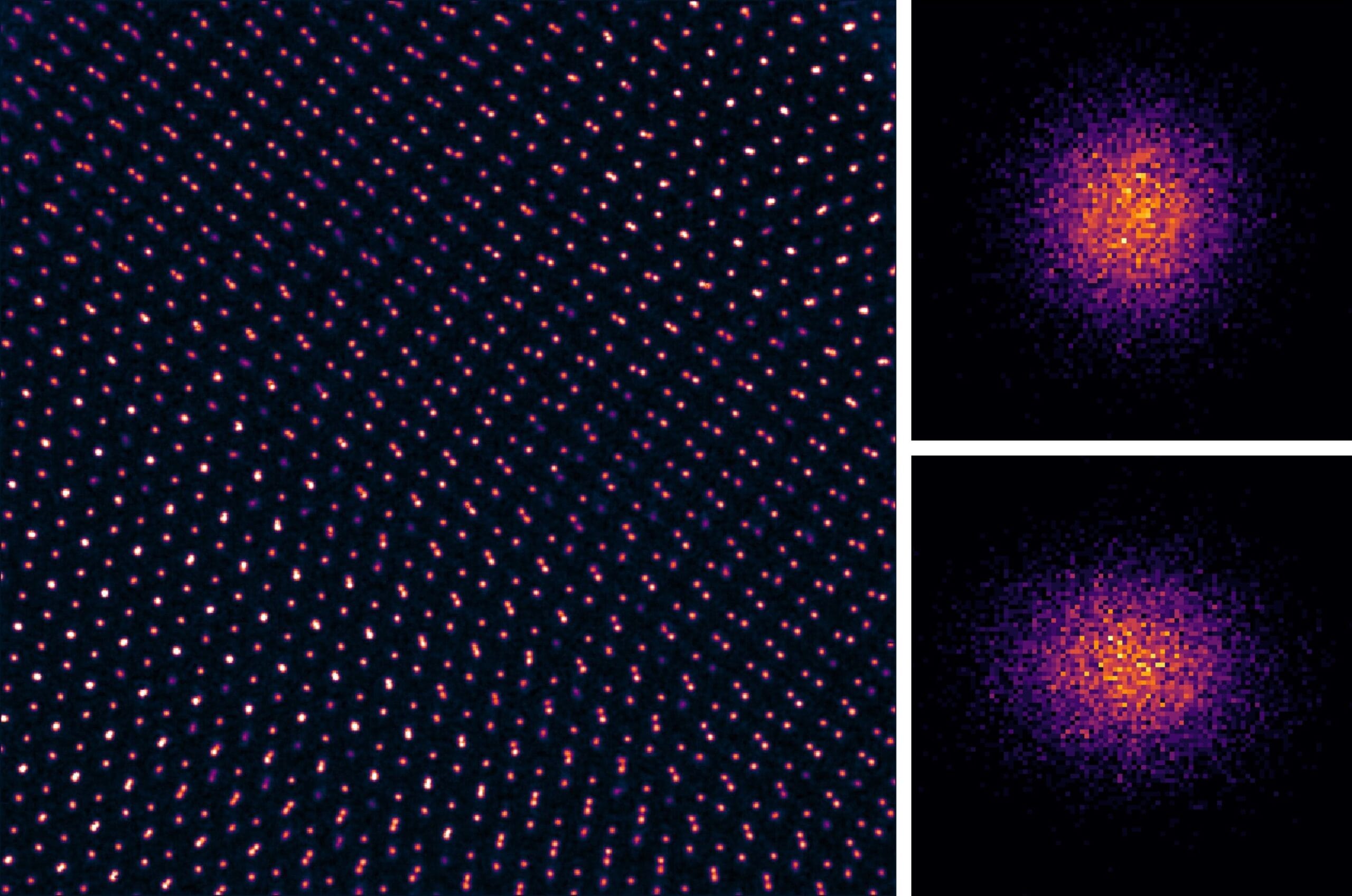We live in a world where vibration is ordinary. We feel it in the hum of an electric toothbrush, the silent pulse of a mobile phone, the quiet murmur of machines that have long blended into the background of our modern lives. To most of us, vibration is simply the physical echo of motion—a signal, a tremor, a shake.
But inside the materials that make up everything we see, wear, touch, and build with, there exists another level of motion—one that has gone unseen, unmeasured, and perhaps even misunderstood for decades. Beneath the skin of matter lies a symphony of atomic tremors, too subtle for the eye, too complex for simple instruments, and too important to ignore.
In a pioneering breakthrough, researchers at The Grainger College of Engineering at the University of Illinois at Urbana-Champaign have found a way to not only detect, but see, these elusive atomic movements—down to a single atom. Using advanced imaging technologies, they have uncovered a long-suspected but never-before-seen class of vibrational phenomena in two-dimensional (2D) materials, called phasons. Their findings, published in Science, open a new chapter in the understanding of heat, motion, and material behavior at the smallest imaginable scales.
A New Dimension in 2D Materials
Two-dimensional materials, like graphene or WSe₂ (tungsten diselenide), are sheets of atoms so thin they defy classical thinking. Picture a material just one or two atoms thick—barely there, yet stable, strong, and full of electrical promise. These are not just science fiction constructs; they’re real, and they represent the future of electronics, sensing technologies, and quantum computing.
But working at the atomic scale presents challenges that go far beyond traditional physics. When layers of these ultra-thin materials are stacked together—but just slightly twisted—they form Moiré patterns: large-scale, wave-like lattice mismatches that give rise to new physical phenomena. This misalignment creates a landscape where particles behave in surprising ways, often unlocking properties like superconductivity or exotic magnetic behaviors.
Among these strange phenomena are Moiré phonons, low-frequency vibrational modes unique to these twisted 2D bilayers. Phonons, in simple terms, are the quantum units of vibration—tiny ripples of motion that define how materials carry heat, respond to sound, and expand under stress. Moiré phonons are fascinating, but they’re not the end of the story.
Hiding even deeper within this vibrational orchestra is another player: the phason. More elusive than the phonon, the phason is a different kind of atomic dance. It shifts atoms within the Moiré pattern without disturbing the lattice’s overall structure. In theory, phasons could explain some of the strangest and most desirable behaviors seen in 2D materials. But until now, no one had seen one.
Seeing Heat—One Atom at a Time
To visualize phasons is not just to take a photograph—it’s to break a long-standing scientific barrier. For Professor Pinshane Huang, a leading researcher in materials science and engineering at UIUC, the question was simple but profound: Can we see atoms move because of heat?
Traditional electron microscopy, while powerful, couldn’t deliver the resolution necessary to spot atomic-level thermal vibrations. The average size of atomic vibration due to heat is around 0.05 angstroms—less than one-tenth of a billionth of a meter. At the beginning of Huang’s career, microscopes maxed out at just under one angstrom. That wasn’t enough.
Then came electron ptychography, a revolutionary imaging technique that reconstructs images by analyzing how electrons scatter through a sample. Unlike conventional microscopy, which sees atoms as blurry dots, ptychography unlocks detail at the picometer scale—one-thousandth of a nanometer. Suddenly, what was once a smudge became a signature. And that signature could change with heat.
“Our central goal was to see heat by looking at an atom,” said Huang. “This works by getting such high spatial resolution that the vibrations of atoms change how blurry the atoms appear.”
With this leap in clarity, what was once invisible became inevitable. Huang and her team, including lead author Yichao Zhang, achieved what had never been done before—they watched phasons shift atoms in real-time. They weren’t just theorizing anymore. They were observing.
Phasons Revealed: A New Type of Vibration
Phasons are fundamentally different from phonons. While phonons represent symmetrical back-and-forth atomic motion—much like the way a bell vibrates—phasons are like a sliding wave. They shuffle atomic positions in a more abstract, non-localized manner, especially within Moiré superlattices.
“You can’t easily get rid of phasons; that’s the blessing and the curse,” said Huang. “They’ve always been hanging around undetected, changing the properties of 2D Moiré materials.”
Imagine building an intricate puzzle where each piece almost fits, but just slightly doesn’t. As you twist or nudge one piece, others rearrange themselves. That reorganization, fluid and dynamic yet invisible to the naked eye, is the essence of a phason.
The researchers didn’t just capture this movement—they traced how it alters material behavior. They found that phasons could influence how efficiently a material conducts heat or responds to strain. In doing so, phasons became more than just an academic curiosity. They became tools—possibly even allies—in the quest to design smarter, more adaptable electronic components.
A Path Toward Smarter Materials
Why does this matter?
Because heat is the silent enemy of electronics. From overheating laptops to failing microchips in spacecraft, heat limits performance, durability, and design. Understanding how heat moves through materials—especially at the atomic level—is key to revolutionizing thermal management.
Zhang, who specializes in nanoscale heat transport, envisions a world where phasons help diagnose thermal inefficiencies before they even manifest at the device level. “One potential application of this technique is making materials that are better heat conductors,” he said. “We could look at a single atom and identify a defect that’s preventing the material from cooling down more efficiently.”
This isn’t just theory. The ability to see heat in action at the scale of a single atom could lead to real-world changes in how we design everything from transistors to medical implants. It could help develop materials that dissipate heat faster, making electronics more energy-efficient, longer-lasting, and less dependent on bulky cooling systems.
But it goes even deeper. Understanding phasons could help researchers exploit quantum effects in future materials. Since 2D Moiré systems already play a role in the development of quantum computing, superconductors, and other next-generation technologies, mapping their hidden vibrational dynamics is not just beneficial—it may be essential.
A Monumental Leap in Microscopy
At the heart of this achievement lies not just clever theory or elegant computation, but a technological miracle: imaging atoms with sub-angstrom precision. What used to be a dream for physicists has now become a powerful tool for discovery. For Huang and her team, the implications are staggering.
“Being able to see heat is one example of how a monumental leap in resolution fundamentally changes what microscopes can do,” Huang said.
The story of science is often told in equations and models. But sometimes, it’s a story of vision—of literally learning to see differently. In the case of phasons, what began as a whisper in theoretical physics has become a visible signature in the world of matter. It’s not just the beginning of a new discovery—it’s the birth of a new kind of seeing.
The Whispering Future of Materials
This breakthrough doesn’t answer every question about 2D materials or thermal conductivity. But it opens a door—one that leads to a future where we no longer guess what atoms are doing. Instead, we watch them do it.
By capturing the motion of a single atom, and listening in on the silent language of phasons, the researchers at UIUC have illuminated a new frontier in nanoscience. Their work is a reminder that even in a universe ruled by forces invisible to the human eye, there is structure, meaning, and revelation—if only we look closely enough.
And now, for the first time in history, we can.
Reference: Yichao Zhang et al, Atom-by-atom imaging of moiré phasons with electron ptychography, Science (2025). DOI: 10.1126/science.adw7751






